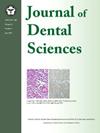皮肤科医生和口腔科医生梅毒研究的科学计量学研究:巩固他们在公共卫生中的作用。
IF 3.4
3区 医学
Q1 DENTISTRY, ORAL SURGERY & MEDICINE
引用次数: 0
摘要
背景/目的:《柳叶刀传染病》呼吁皮肤科医生在梅毒肆虐时采取行动。在实践中,皮肤科医生和口腔科医生会对梅毒进行早期诊断,并将患者转介到适当的治疗机构:这项科学计量学研究旨在调查和比较Scopus数据库中皮肤科医生和口腔科医生发表的梅毒论文的研究趋势和特点,重点分析能够反映研究方向和关注主题的关键词:在18120篇有关梅毒的论文中,皮肤科医生和口腔科医生分别发表了1981篇(10.9%)和201篇(1.1%)。皮肤科医生和口腔科医生发表的论文总被引次数分别为18629次和2376次,h指数分别为52和25。皮肤科医生和口腔科医生论文中的常见关键词包括男性、苍白螺旋体、苄星青霉素、鉴别诊断、人类免疫缺陷病毒、继发性梅毒、梅毒血清学、皮肤梅毒、神经梅毒、先天性梅毒、淋巴结病、软下疳、淋病、皮疹、红斑和丘疹。皮肤科医生使用的独特关键词包括婴儿、妊娠并发症、淋巴细胞浸润、螺旋体和遗传。口腔科医生使用的关键词包括问卷调查、认识、感染风险、健康态度、性健康、口交和无保护性行为:结论:在现代社会,皮肤科医生和口腔科医生在早期识别和及时诊断梅毒、倡导旨在提高认识的公共卫生运动以及改善高危人群的医疗服务方面都发挥着重要作用。本文章由计算机程序翻译,如有差异,请以英文原文为准。
A scientometric study of syphilis research by dermatologists and stomatologists: Underpinning their roles in public health
Background/Purpose
The Lancet Infectious Diseases launched a call to action for dermatologists in the rise of syphilis. In practice, dermatologists and stomatologists perform early diagnoses of syphilis and refer patients to adequate treatment.
Materials and methods
This scientometric study aimed to investigate and compare research trends and characteristics of syphilis publications by dermatologists and stomatologists in the Scopus database, with emphasis on the analysis of the keywords that can reflect research directions and topics of concern.
Results
Among 18,120 papers on syphilis, 1981 (10.9%) and 201 (1.1%) were published by dermatologists and stomatologists, respectively. The total citation count was 18,629 and 2,376 with an h index of 52 and 25 for publications by dermatologists and stomatologists, respectively. Common keywords in papers by both dermatologists and stomatologists included male, Treponema pallidum, benzathine penicillin, differential diagnosis, human immunodeficiency virus, secondary syphilis, syphilis serology, cutaneous syphilis, neurosyphilis, congenital syphilis, lymphadenopathy, chancre, gonorrhea, rash, erythema, and papule. Distinctive keywords used by dermatologists included infant, pregnancy complications, lymphocytic infiltration, spirochete, and genetics. Keywords that included questionnaire, awareness, infection risk, attitude to health, sexual health, oral sex, and unprotected sex were used by stomatologists.
Conclusion
In the modern context, both dermatologists and stomatologists play important roles in providing early recognition and timely diagnosis of syphilis, advocating for public health campaigns aimed at increasing awareness, and improving access to care for at-risk patient populations.
求助全文
通过发布文献求助,成功后即可免费获取论文全文。
去求助
来源期刊

Journal of Dental Sciences
医学-牙科与口腔外科
CiteScore
5.10
自引率
14.30%
发文量
348
审稿时长
6 days
期刊介绍:
he Journal of Dental Sciences (JDS), published quarterly, is the official and open access publication of the Association for Dental Sciences of the Republic of China (ADS-ROC). The precedent journal of the JDS is the Chinese Dental Journal (CDJ) which had already been covered by MEDLINE in 1988. As the CDJ continued to prove its importance in the region, the ADS-ROC decided to move to the international community by publishing an English journal. Hence, the birth of the JDS in 2006. The JDS is indexed in the SCI Expanded since 2008. It is also indexed in Scopus, and EMCare, ScienceDirect, SIIC Data Bases.
The topics covered by the JDS include all fields of basic and clinical dentistry. Some manuscripts focusing on the study of certain endemic diseases such as dental caries and periodontal diseases in particular regions of any country as well as oral pre-cancers, oral cancers, and oral submucous fibrosis related to betel nut chewing habit are also considered for publication. Besides, the JDS also publishes articles about the efficacy of a new treatment modality on oral verrucous hyperplasia or early oral squamous cell carcinoma.
 求助内容:
求助内容: 应助结果提醒方式:
应助结果提醒方式:


